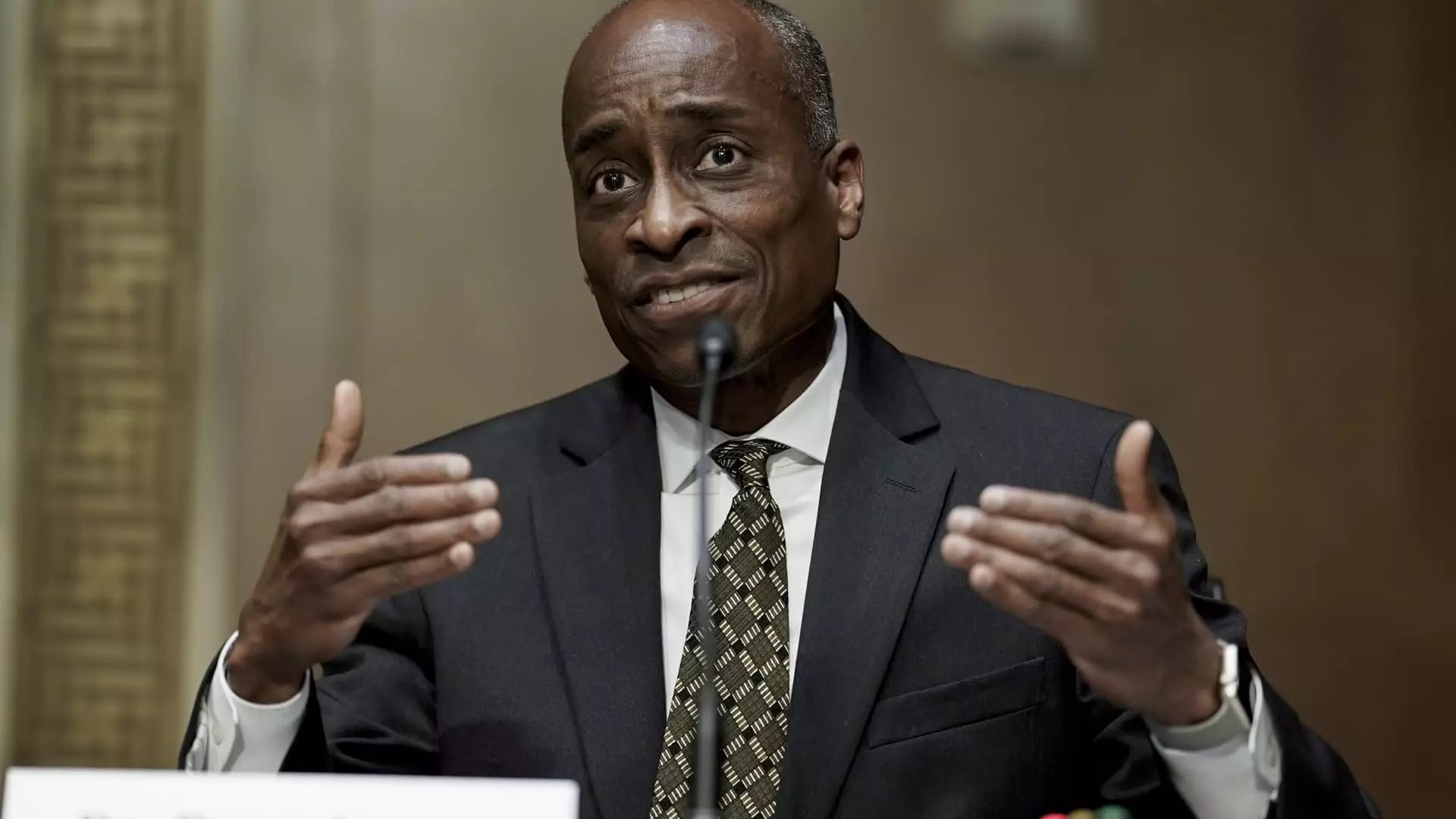In the midst of fluctuating economic indicators, the Federal Reserve finds itself at a critical juncture. Vice Chair Philip Jefferson recently articulated a balanced perspective on interest rate adjustments during a speech that underscores the complexities of today’s economic landscape. Jefferson’s insights point to a strong economy characterized by a resilient labor market, yet he remains highly aware of the ongoing challenges posed by inflation. His statements reflect a careful approach, advocating for a measured pace in modifying monetary policy, particularly as the Federal Reserve navigates an environment filled with both promise and unpredictability.
Jefferson’s remarks highlight a fundamental principle for the Federal Reserve: caution. While he acknowledges the current strength of the economy and suggests that the labor market is stable, he emphasizes the necessity of restraint in making decisions regarding interest rates. The Vice Chair’s contention is that despite the initial appearance of a robust economic recovery, the path to a sustainable and stable trajectory remains uneven, described as “bumpy.” This metaphor effectively encapsulates the dual nature of the situation, indicating that while positive growth is attainable, it will not occur without its challenges.
Indeed, Jefferson notes that any further adjustments to interest rates should not be rushed. He advocates allowing time for the economy to adjust to previous rate cuts while recognizing the potential shifts in economic dynamics. His perspective is not merely protective but strategic; he envisions a gradual unwinding of monetary policy restraint, favoring a more neutral stance that balances the competing goals of stimulating growth and keeping inflation in check.
The question of inflation is central to the Federal Reserve’s considerations. Jefferson specifically points to the personal consumption expenditures price index, which has shown signs of easing but remains above the Fed’s objective of 2%. This setting places the Fed in a complicated scenario, one where inflationary pressures need to be managed without stifling economic growth. Jefferson’s forecast acknowledges a degree of uncertainty surrounding inflation trends, cautioning that various scenarios could play out depending on external factors such as labor market conditions and inflationary trends.
Highlighting this uncertainty is crucial, as it reflects the need for flexibility in policy formulation. Jefferson’s adaptation of his outlook based on potential changes in the economic environment reveals an institutional commitment to data-driven decision-making. This approach allows the Federal Reserve to navigate the complexities inherent in economic forecasting, particularly when the evolving global economic landscape plays a significant role.
The Vice Chair’s commentary also touches upon the wider implications of government policies, particularly in the context of international trade. The ongoing tariff negotiations can substantially impact economic conditions and complicate monetary policy. Although the Federal Reserve typically refrains from commenting on the intricacies of political decisions, Jefferson’s acknowledgment of these issues highlights the interconnectedness of fiscal policy and monetary policy. In effect, it conveys that external economic pressures—such as tensions with trade partners or domestic policy shifts—can significantly influence the Federal Reserve’s strategy.
As President Biden navigates these turbulent trade negotiations, the Federal Reserve must remain vigilant, adept at responding to changes not only in domestic economic conditions but also in the fluid dynamics of global trade relationships. This interdependence emphasizes that the currency and policies of one nation can reverberate, necessitating ongoing assessments and adjustments.
Philip Jefferson’s recent statements provide a nuanced understanding of the state of the economy as the Federal Reserve contemplates future policy directions. His cautious yet optimistic outlook highlights the importance of a gradual approach to interest rates in an environment marked by both progress and challenges. The balance between fostering economic growth and managing inflation is delicate but essential. The Federal Reserve’s careful choreography amidst uncertainty is crucial for ensuring a stable economic future, advocating for policies that are responsive to evolving conditions both domestically and internationally. As the landscape continues to shift, the vigilance demonstrated by leaders like Jefferson will be instrumental in guiding monetary policy effectively.



Leave a Reply